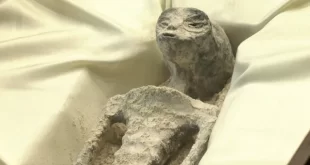Two new, highly partial dinosaur skeletons have been unearthed in the Ouled Abdoum basin in Morocco, renowned for its phosphate quarries. Interestingly, this site was once a shallow tropical sea around 70 million years ago during the Late Cretaceous period. Most of the fossils found here belong to marine creatures like fish, crocodilians, turtles, and marine reptiles such as elasmosaurs, mosasaurs, and sharks. However, among these marine discoveries, there have also been findings of terrestrial remains, likely carried by rivers, including ancestors of elephants and a few rare dinosaurs.
These recent finds have unveiled two new dinosaur species closely related to the Tyrannosaurus rex. Despite the fragmentary nature of these discoveries, they hold significant importance for understanding the prehistoric fauna of the region. Within the extensive excavation site that has already revealed three dinosaur species—a hadrosaur (duck-billed dinosaur) named Ajnabia odysseus, a long-necked titanosaur, and an imposing Abelisaurid called Chenanisaurus barbaricus measuring nearly 9 meters in length—these two new species also fall within the Abelisaurid family. These bipedal carnivorous dinosaurs exhibit striking similarities to the T. rex, although their snouts are slightly shorter, and their arms are even smaller.
The remains of the first fossil were found near the town of Sidi Daoui, comprising a foot bone belonging to an adult dinosaur measuring around 2.5 meters in length. The second specimen, a shinbone or tibia, also from an adult individual but larger at nearly 5 meters in length, was unearthed near the town of Sidi Chennane. The detailed description of these two bones, published in the journal Cretaceous Research, confirms them as distinct and previously unknown species. However, due to the limited fossil evidence, assigning specific names to them is not yet possible.
Research continues in the region, with ongoing examination of other fossils found in the same area. While the results of these analyses are still pending, they suggest that several new species could potentially emerge from these discoveries. Not far from Ouled Abdoum, further south, the Kem Kem Beds have also yielded a multitude of slightly older dinosaurs dating back around 100 million years. This abundance of findings speaks to the richness of the dinosaur fauna prior to the end-Cretaceous extinction event.
At one time, a theory proposed that the demise of dinosaurs was caused not only by the significant asteroid impact in the Yucatan region but also by a decline in their diversity. However, this hypothesis applies only to North America and does not accurately reflect the diversity observed in other parts of the world. Discoveries in Morocco and other sites thus showcase the intricacies of dinosaur life and offer new insights into their evolution and extinction.
 medjouel.com Study Non Stop
medjouel.com Study Non Stop



